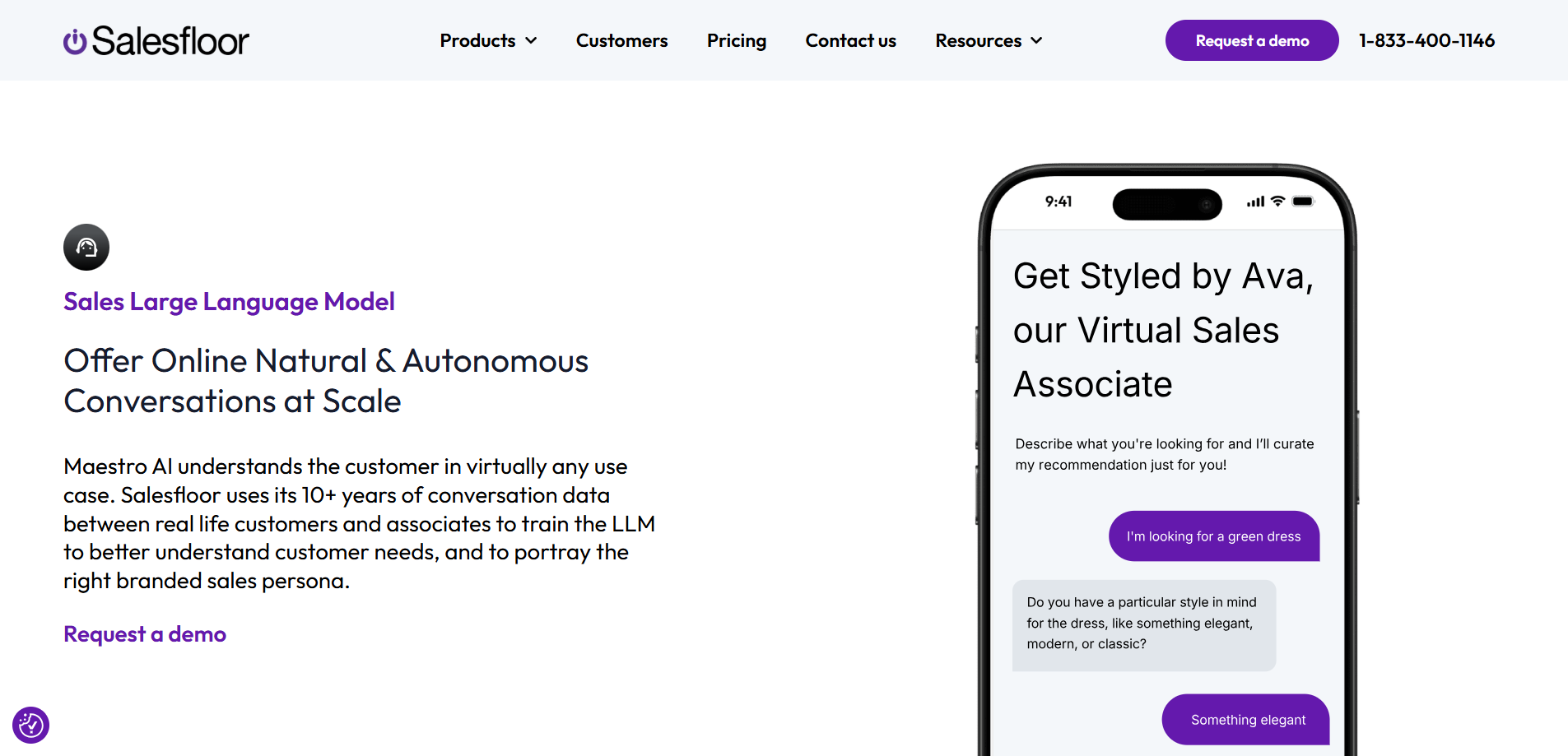Salesfloor’s AI associate uses proprietary Shopping Intelligence to enable real-life autonomous conversations with shoppers engineered for a personalized brand experience and conversion.
Role I played:
I owned end-to-end development of the conversational AI engine. Here’s how I drove the project technically and strategically:
1. Core System Design
Problem:
Traditional retail chatbots failed because:
- They couldn’t handle nuanced shopping dialogues
- Lacked real-time personalization
- Felt robotic vs. human sales associates
My Solutions:
- Architected a hybrid conversational AI system combining:
- Rule-based workflows for critical retail scenarios (e.g., returns, sizing)
- Generative AI (fine-tuned GPT-3.5) for natural responses
- Reinforcement Learning to optimize for conversion
- Designed the Shopper Context Graph:
- Real-time integration of:
- Browse behavior
- Purchase history
- CRM data (loyalty tier, past returns)
- Real-time integration of:
Key Technical Contributions
A. Intent Classification
- Trained a DistilBERT model on:
- 500K+ retail chat transcripts
- 38 shopping-specific intents (e.g., “fit advice”, “price negotiation”)
- Achieved 98% accuracy by adding retail-specific embeddings
B. Conversational Memory
- Implemented a hierarchical attention mechanism:
- Short-term memory (last 3 messages)
- Long-term memory (shopper profile)
- Product catalog attention
C. Conversion Optimization
- Built a custom RL environment where the AI learns from:
- Positive signals (add-to-cart, checkout)
- Negative signals (message ignores)
- Used PPO (Proximal Policy Optimization) for stable training
- Built on Neo4j for rapid relationship queries

